All About Using Sound Walls in the Classroom
This post may contain affiliate links. As an Amazon affiliate, we earn from qualifying purchases.
Read all about the best ways to start using a sound wall in your classroom. Learn about the benefits and get research-backed information and practical tips for using this effective tool to support the literacy needs of ALL students, and get links to FREE sound wall options!
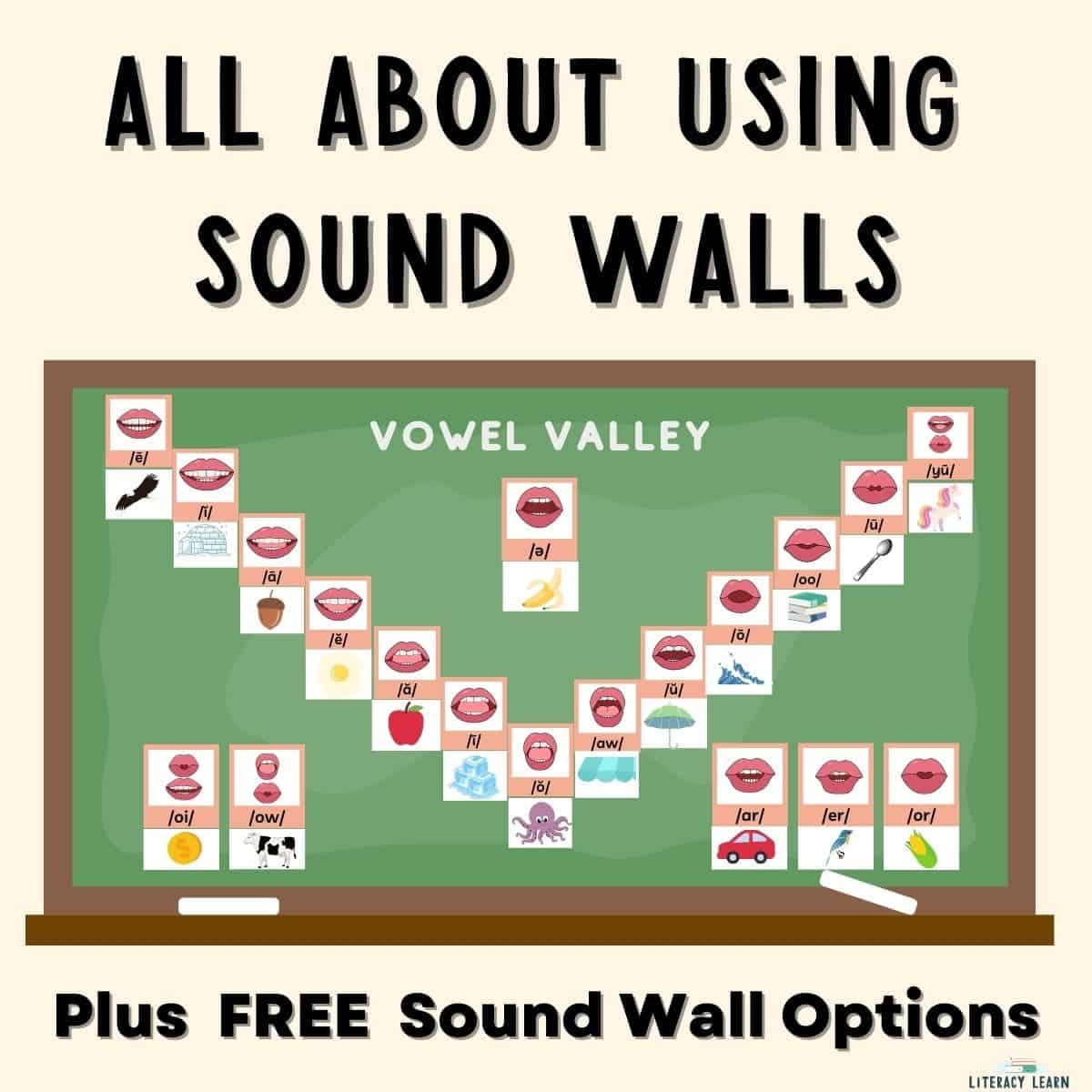
What Is a Sound Wall?
A sound wall is a tool used within the classroom where all 44 sounds in the English language are displayed. This includes both consonant and vowel sounds.
Sound walls are organized in two parts: a Consonant Sound Wall and a Vowel Valley. In both places, every sound should include:
- Mouth articulation pictures. This is usually a photograph of a child’s mouth showing how the mouth looks when starting to say the sound.
- A picture of a familiar keyword image that begins with or includes that sound.
- The written ways to spell the sounds.
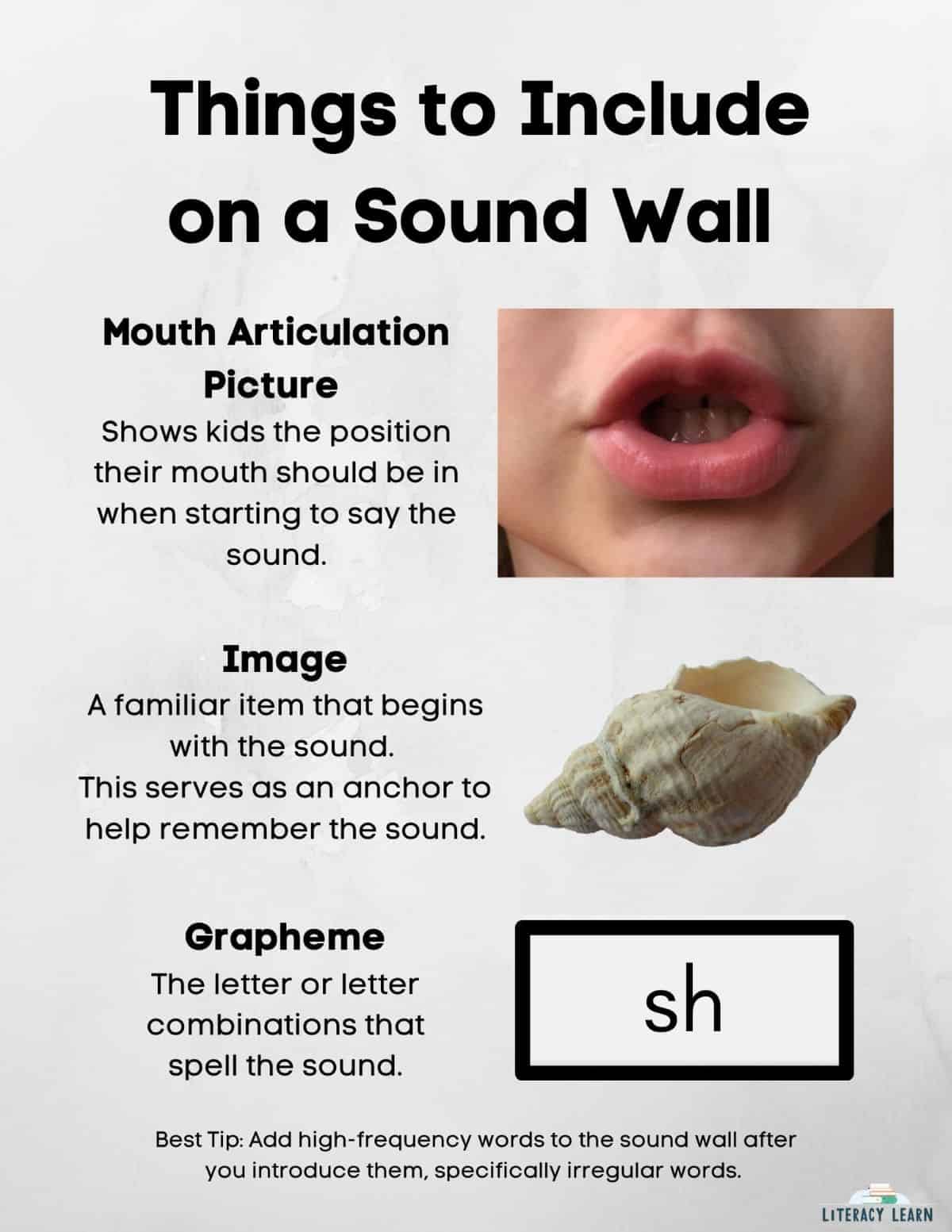
A sound wall is a tool used to make the sounds (phonemes) we hear within words connect to the letters that spell the sound (graphemes). It’s a visual representation showing the speech to print connection.
It makes the phoneme-grapheme connection visible and accessible to children as they are learning how to read and spell.
The benefits of using sound walls are discussed heavily in many Science of Reading books!
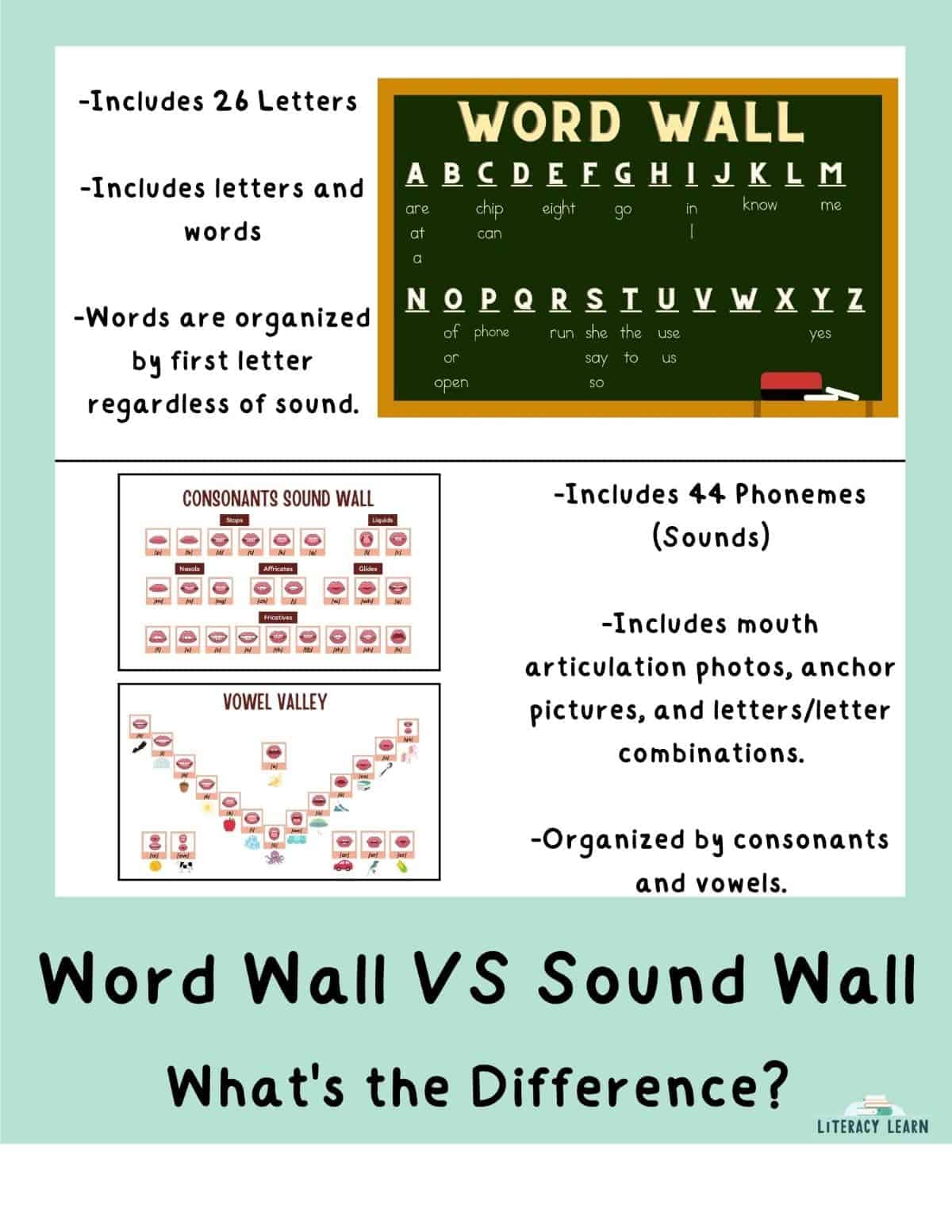
Sound Walls Vs. Word Walls
Word walls are still common in many classrooms, but current research does not support word walls at the elementary level. Many teachers trained in the Science of Reading are now transitioning from word walls to sound walls. And here’s why:
A word wall is a tool that displays all 26 letters of the alphabet. Word walls include words that begin with letters, but it doesn’t take into consideration the sounds. This can be pretty confusing!
Think about these high-frequency words at, are, & a. On a word wall, these three words would be included under the Letter A. However, they all start with different sounds.
- At starts with a short sound /ă/ like apple.
- Are starts with the r-controlled vowel sound /ar/ like in car.
- A has a long vowel sound /ā/ like acorn.
Can you see how this is confusing and unhelpful for kids trying to learn how to read (decode) and spell (encode) unfamiliar words?
Remember, the science tells us that our brains store words permanently through the process of orthographic mapping, not memorizing whole words. So let’s move away from this expired practice of using a word wall and transition to using a sound wall.
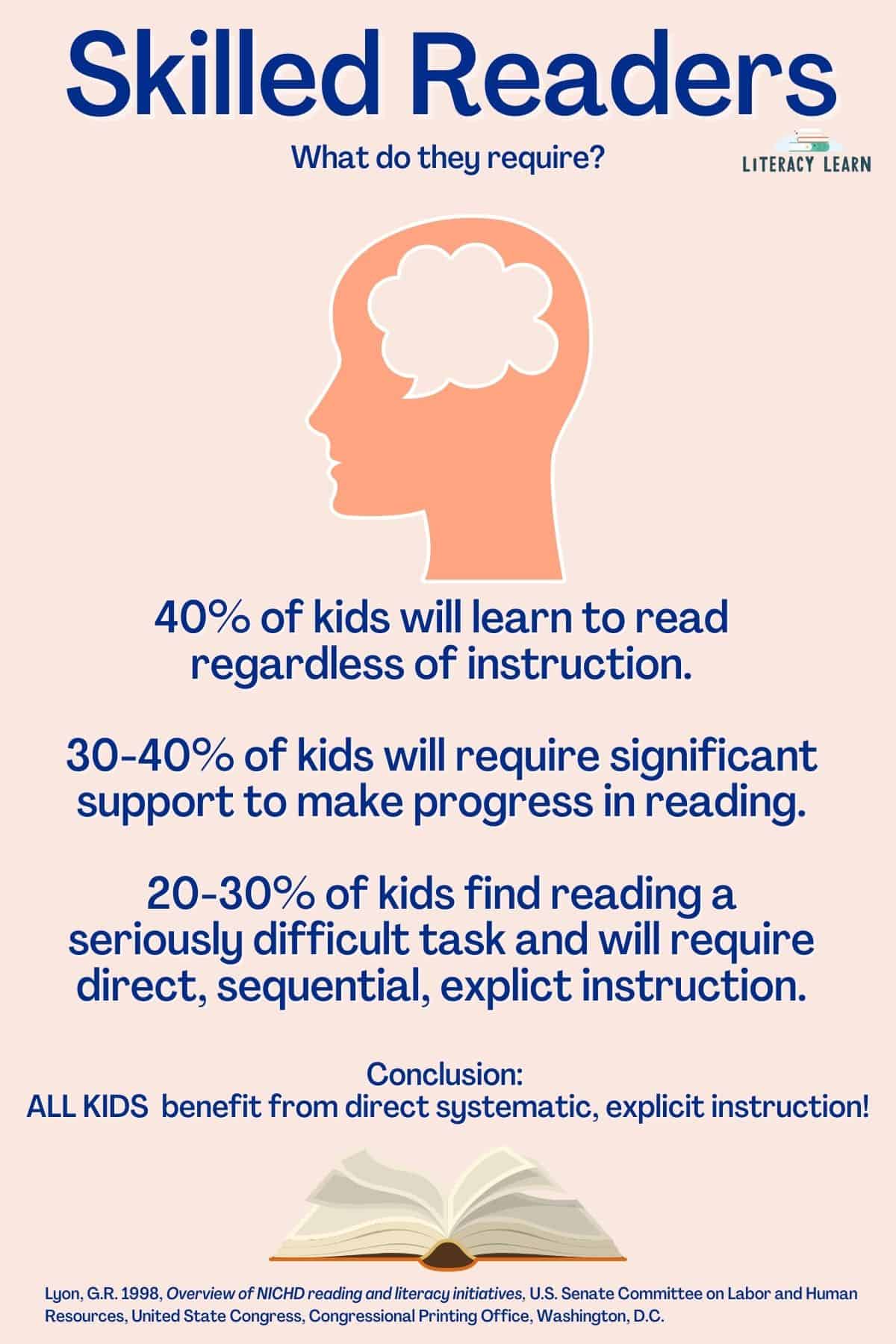
Benefits of a Sound Wall
Language, sounds, and spellings are explicitly learned with the help of a sound wall. There’s a logic to the English language, and it doesn’t have to be a mystery.
Important, specific benefits of a sound wall:
- Helps develop phonemic awareness. Students can hear every speech sound in isolation, and it becomes a building block for reading.
- When displayed, it’s used as a scaffold to help students to problem-solve on their own. This becomes motivating and exciting for children!
- Helps limit confusion of new concepts. Kids can see the organization of our speech sounds and make sense of it.
- Keeps track of spelling patterns. English has over 250 ways to spell the 44 sounds of our language. For example, there are 8 ways to just spell the long /a/ sound: a, a-e, ai, ay, ei, ea, eigh, and ey. A sound wall is a perfect place to organize the patterns once they are taught.
- It supports the majority of kids who need explicit, systematic, and sequential instruction to become skilled readers. A sound wall provides this with daily practice, exposure, and reinforcement. It is especially helpful for EL students and children with dyslexia or disabilities who require many repeated exposures.
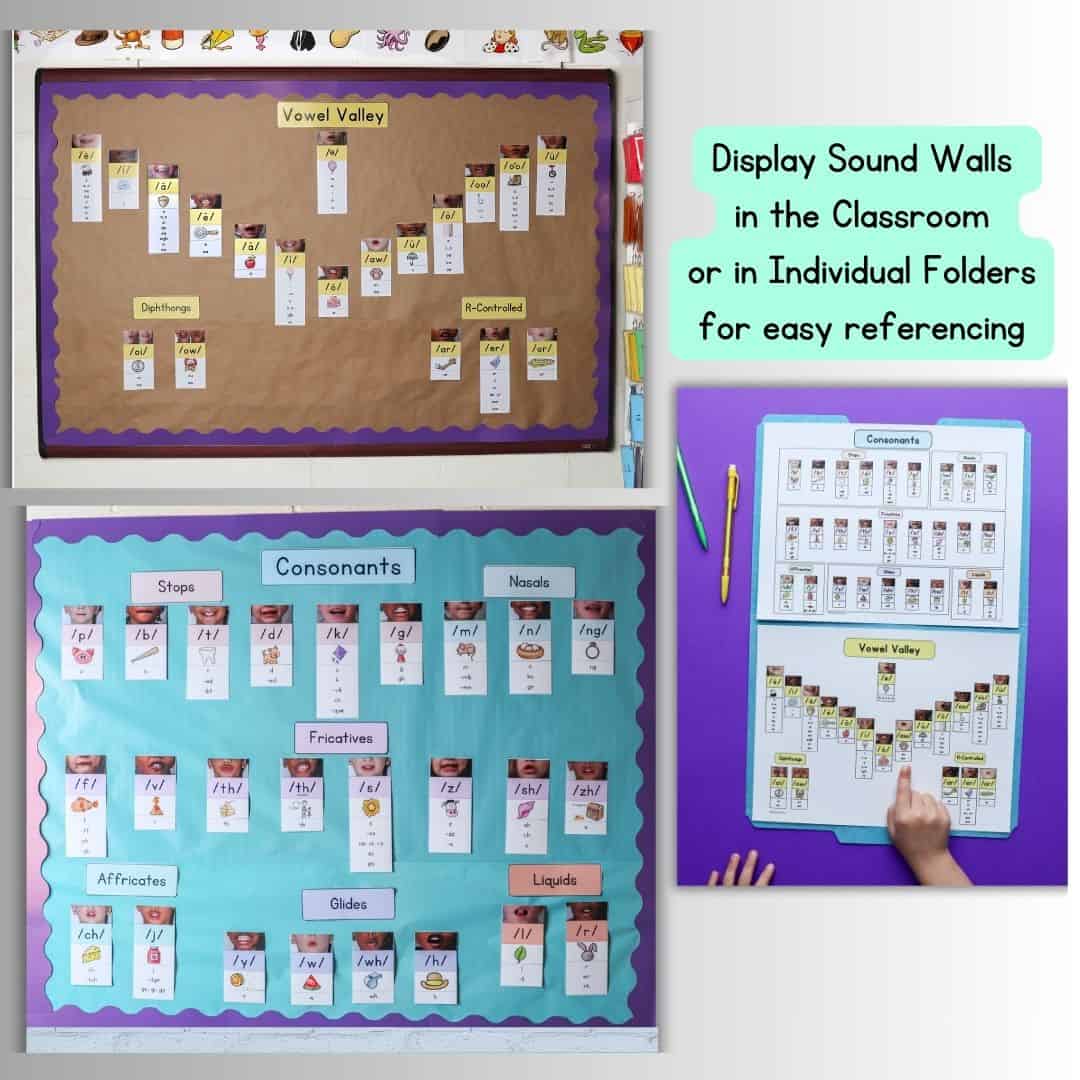
Building and Implementing a Sound Wall
There will be 2 parts to the sound wall: a consonant sound wall and a vowel valley sound wall.
Consonant Sound Wall
The consonant sound wall should be organized by where the sound begins in the mouth and the way the sound happens. Louisa Moats refers to this as the “manner of articulation” (Moats, 2020). As you teach, talk about the characteristics between similar sounds and contrast how sounds are different.
👌 Important articulation terms to know: stops, nasals, fricatives, affricatives, liquids, and glides. Don’t be afraid to introduce these terms when talking to your students about how our mouths produce the sounds.
Vowel Valley Sound Wall
The vowel valley begins with sounds where the mouth is mostly closed and tightest when produced, then slowly progresses down to the sounds as the jaw drops open and the mouth is round. It then goes back up in the same order, with an open mouth gradually closing back up. This is why it’s called a vowel valley!
Short vowels, long vowels, r-controlled vowels, diphthongs, schwa, and vowel teams like /aw/ and /oo/ are included on the sound wall.
R-controlled, schwa, and diphthongs are usually placed outside of the vowel valley, but still located on the vowel wall.
👉 BEST PRACTICE: Although we are talking all about sounds on the sound wall, print also needs to be included in the sound wall. Why? Because we need print in order to read.
You can definitely include high-frequency words on the wall, especially irregular heart words, once they have been explicitly taught.
Start by displaying words that include common patterns and then remove them quickly after teaching. Sticky notes are great for this! Once students have been taught the sound and spelling, students shouldn’t need them on the sound wall. Instead, students should tap and map them.
Best Tips & Ideas
Best tips for using a sound wall:
- Identify a space for the consonant and vowel valley sound walls. (It should take up the same amount of space you needed for a word wall.)
- Choose the sound wall you’re going to use. Gather all of your materials (Mouth articulation cards, anchor pictures, graphemes).
- Decide how to organize the materials on your wall.
- Create the sound wall, and then grow the sound wall together.
- Decide how to reveal new phonemes and graphemes. Introduce a few sounds per week. Spend maybe 10-15 minutes per day interacting with and explicitly teaching sounds and building awareness of language. Use our free consonant and vowel sound worksheets to help teach kids!
- Make sure it aligns with your scope and sequence. Add the graphemes only after introducing the spelling for the sound.
- Include a time on your daily schedule for explicit instruction using this tool.
- Use mirrors to help kids see how their mouths match the pictures.
Become more knowledgeable in your understanding of sound walls:
- Watch FREE webinars to learn more about sound walls, like this PaTTAN webinar or this Tools4Reading webinar. Both are EXCELLENT resources to learn more about a sound wall.
- Join Facebook groups like Tools4Reading Sound Walls. This is a fabulous place to ask your questions and get additional resources!
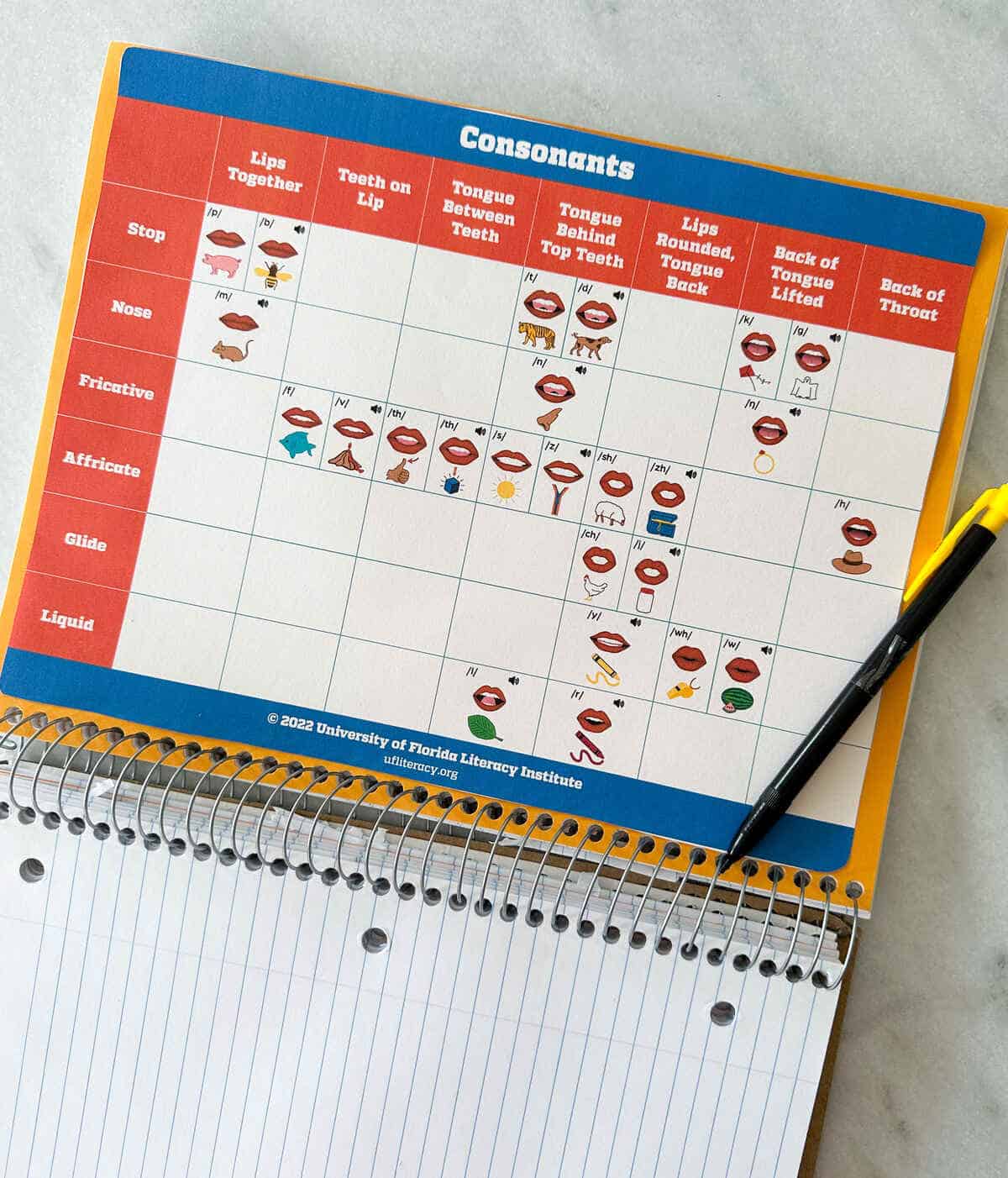
Get Everything to Build a Sound Wall for FREE
Here at Literacy Learn, we’re all about providing FREE resources for teachers as often as possible. There are many completely free Sound Wall resources that provide quality instructional supports to their students.
👉 Option 1: University of Florida Literacy Institute
UFLI includes everything you need to create a FREE sound wall. They include phoneme cards, grapheme cards, labels, and use clip art for the mouth articulation photos.
They also include an option for an individual sound wall chart that can be included in a file folder for each child. As a reading interventionist traveling from classroom to classroom with my cart, I love this resource. My sound wall is totally portable and doesn’t take up much space!
👉 Option 2: Louisiana Believes
In 2022, the NAEP (National Assessment of Educational Progress) reported that the state of Louisiana had made significant gains in reading improvement and was actually one of the leading states in the nation. This is due to legislative and educational reform efforts rooted in the Science of Reading.
One such effort is a hub to provide educators with supports and resources to help them easily implement research-based practices in their classroom.
A FREE sound wall is one such resource. Included are instructions for assembling, phoneme and grapheme cards, and a sample picture of a real-life word wall. This is the only free resource that uses real photographs of children’s mouths!
👉 Option 3: Colorado Department of Education
Included with this FREE sound wall is a basic version, an advanced version, and an individual version which they call a placement version. It reminds me a bit of a placement, and is definitely a helpful resource for kids to include in their phonics notebook.
Related Resources
You can also grab our low-prep sound wall that includes real mouth articulation photos!
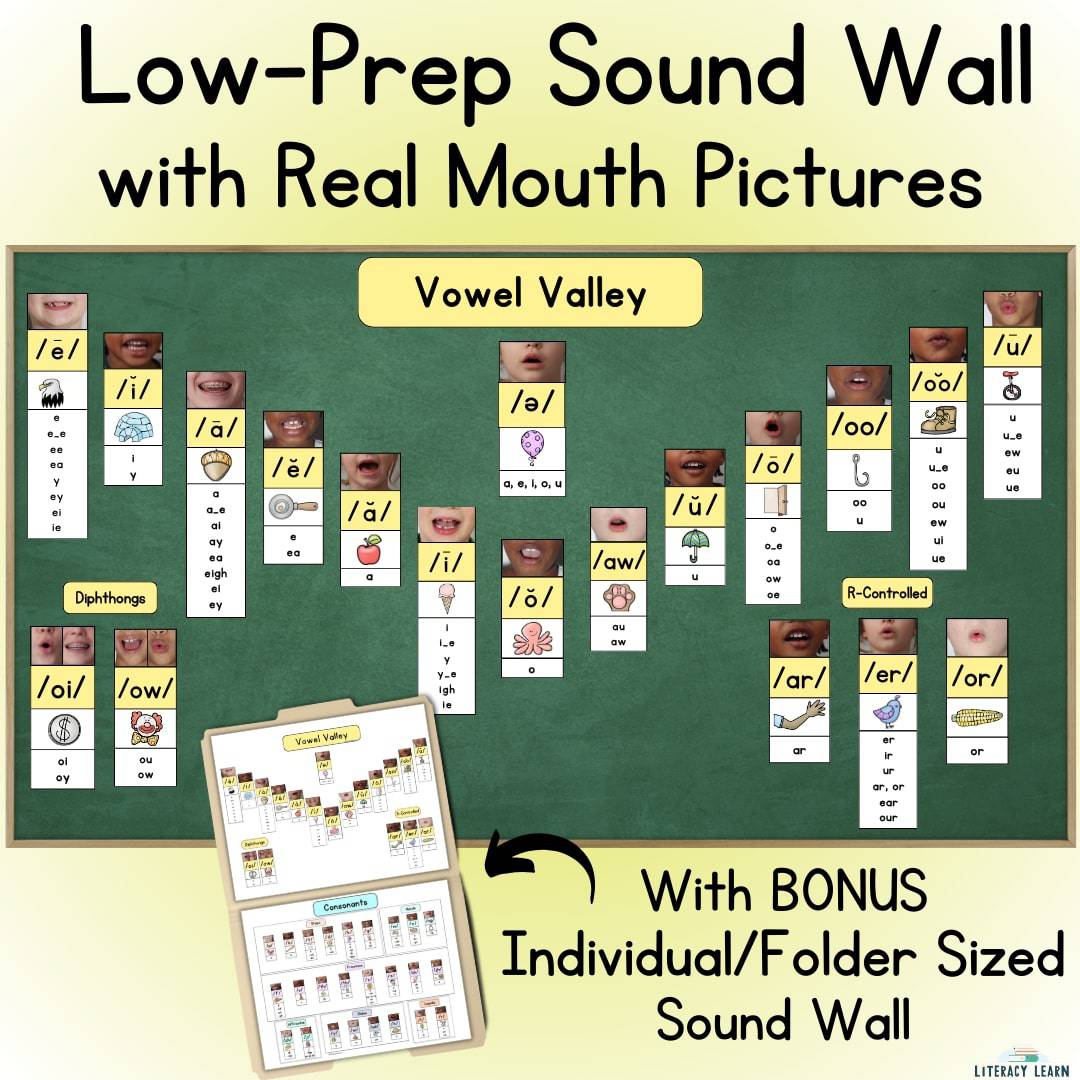
- Orton-Gillingham Training: Everything To Know
- Hundreds of Free Decodable Books!
- Dyslexia Therapy: Lexercise’s Online Help for Struggling Readers
- Phonics Mega Bundle: 293 Pages of Targeted Phonics Game for ALL skills
- Check out our favorite Dyslexia and Dysgraphia Learning Software (use code LM10 for 10% off)
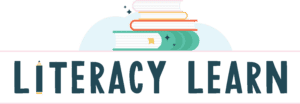
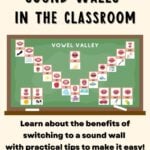
Thank you! I will subscribe because it’s one of the best ones I’ve seen so far. I’ve been digging. Thank you! Printing UFLI for now. Your unicorn and octopus is so cute!
I looked through all the “free” sound walls and don’t see the one you use at the top of your blog. I like those graphics the best. Please let me know where I can find that one. Thank you!
Hi Robin,
That sound wall was a graphic we put together for the image for our post. We don’t currently have that sound wall as a downloadable file …but we’re working on it. If you subscribe to our email list, you’ll be alerted as soon as it becomes available!
Katie and Laura
Thank you! I will subscribe because it’s one of the best ones I’ve seen so far. I’ve been digging. Thank you! Printing UFLI for now. Your unicorn and octopus is so cute!
Hello,
Has this sound wall become available? I can’t seem to find it in your TRT shop. Thanks!
Hi Sara,
Here is the link to the sound wall. Here is a link to a bundle that includes the sound wall and matching phonogram cards. Thanks for supporting our TPT store!
Katie and laura
Thank you, I appreciate it!
Hi Lenny,
We are glad you found the information useful. Best of luck using and implementing sound walls in your classroom!
Katie & Laura